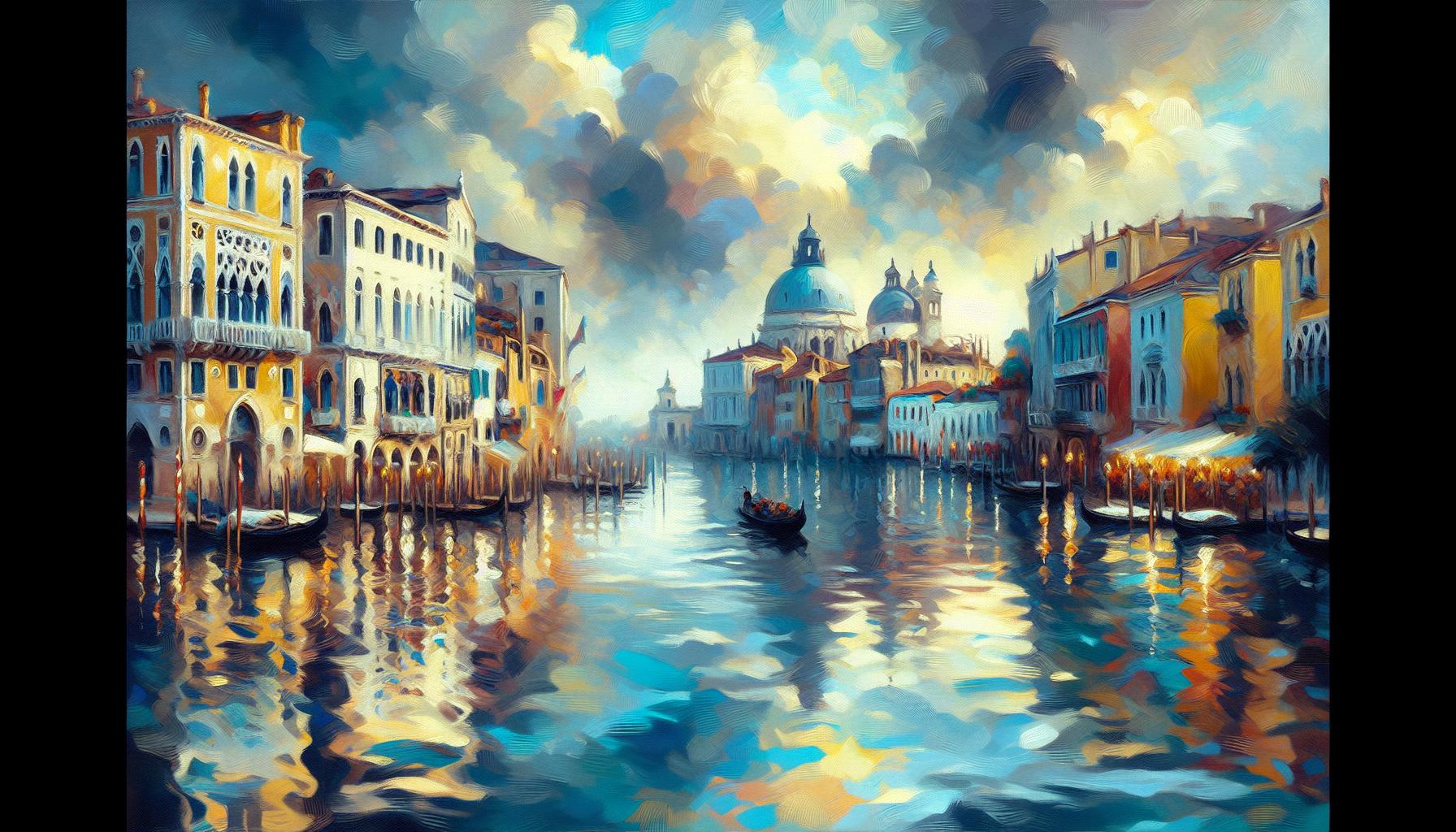How to Paint Realistic Water in Oil: Reflections and Movement
Dive into the art of painting realistic water in oil, mastering reflections and movement to capture nature's beauty on canvas. Perfect for both aspiring and seasoned artists eager to enhance their skills.

How to Paint Realistic Water in Oil: Reflections and Movement
Creating a mesmerizing piece of water painting in oil requires more than just technical skill; it demands an understanding of water's subtle nuances and a mastery over advanced oil painting techniques to render realism in its most vivid form. This blog post will delve into the essential elements involved in painting realistic water, focusing on capturing reflections and effectively portraying water movement in oil. Whether you're an aspiring realist or an experienced artist keen on refining your craft, these insights are tailored specifically for you.
Understanding the Essence of Water in Art
Water, in its myriad forms, presents a challenge and an opportunity for artists aiming for realism in oil. Capturing its essence requires careful observation and strategic execution. The transparency, fluidity, and reflective nature of water can be intimidating to capture on canvas. However, when done right, the results can be both breathtaking and rewarding.
Water is a dynamic subject, ever-changing with its environment. From the way light bends and reflects off the surface to the intricate dance of ripples and waves, each element adds depth and dimension to a painting. The goal is to replicate not just the appearance but the feel of water, inviting viewers to experience its tranquility or its tumultuous spirit.
The Importance of Light and Reflections
Light is the core element that gives life to water in art. Without it, water appears dull and lifeless. As light interacts with water, it creates reflections that dance on the surface, adding complexity and realism. When aiming for realism in oil, it is crucial to consider how light will affect the painting throughout the day. Shadows may deepen, and highlights may shift, altering the mood and focus of your work.
To capture reflections effectively, observe how objects near or within the water are mirrored. The colors may not be as vivid in the reflection, often appearing softer and more subdued, depending on the sunlight and the water's clarity. Reflective surfaces, especially on calm water, should be silky smooth in your brushwork, capturing the elegance of the scene.
Analyzing the Colors of Water
Understanding the colors in water is another critical component. While water can appear blue, green, or even brown, these colors are not derived from the water itself but rather from reflection and absorption of the natural surroundings and sky.
A standard approach is to mix colors that reflect these subtle changes. Ultramarine Blue or Phthalo Blue mixed with Burnt Sienna or Raw Umber creates a natural hue for deeper water sections. To capture the sparkle of light on water, use lighter pigments like Titanium White mixed with a tiny pinch of yellow or blue. Always blend smoothly to maintain the uniformity and authenticity of reflections.
Techniques for Painting Water Movement in Oil
Capturing the movement of water can transform a static image into a living, breathing masterpiece. Water movement in oil involves understanding the rhythm and flow, whether it’s the gentle lapping of waves against the shore or the ferocious rush of a river.
Observational Studies: From Life to Canvas
Start by observing natural water bodies. Regular visits to lakes, rivers, or coastal areas for firsthand study can significantly impact your understanding. Notice how waves form patterns, how they reflect light differently, and how wind affects their surface. Take photographs or make quick plein air studies to capture these elements in real-time.
Brush Techniques for Dynamic Movement
Using a variety of brush strokes can impart the sense of movement to your work. For instance, a fan brush can replicate the texture of waves, while a liner brush can create fine details like foam and bubbles. Employ short, choppy strokes for depicting stormy seas or a palette knife for vigorous-moving water to simulate splashes and froth.
Mastering Transparency and Depth
Transparency is a crucial feature of water. Techniques such as glazing and scumbling can help achieve this effect. Thin glazes of color laid over dried layers can mimic the subtle depth and transparency of water. Scumbling, using a dry brush over raised areas of canvas, allows the layers underneath to peek through, enhancing the complexity and dimension.

Advanced Oil Painting Strategies
For seasoned artists, refining skills to include advanced oil painting techniques can elevate the realism in water depiction.
Layering and Wet-on-Wet Techniques
Layering is paramount to achieving depth and richness in water paintings. Initially, lay down an underpainting to establish values and general composition. Use the wet-on-wet method to blend colors directly on the canvas, allowing an organic flow of pigment that mimics water's natural motion.
After establishing the foundation, go back with glazes to enhance dimensional qualities. Be sure to adjust contrast by darkening the water's depth and highlighting the crest of waves. This nuanced adjustment is vital to create a multi-dimensional effect.
Incorporating Added Textures
Adding texture could enrich the painting's surface, enhancing the tactile experience of water’s movement. For example, consider using additives like modeling paste with a palette knife to build texture for waves or to depict splashes in a waterfall. This approach makes the painting more engaging, as textures catch the light differently and add visual interest.
Polishing Details and Finishing Touches
After securing the essence of water, focus on polishing. Use small brushes for minute detail work, such as tiny ripples or highlights caused by reflections of the sun or moon. For a final wash, consider your glazing layer to unify the painting’s tone and add an ethereal finish. Varnishing also ensures the longevity of your work, protecting it from dust and UV rays while enhancing color vibrancy.
Conclusion
When it comes to painting realistic water scenes in oil, the journey involves constant learning and refinement. By mastering the effects of light and reflections, understanding color interaction, employing diverse brush techniques, and incorporating advanced oil painting methods, you transform the simple act of painting into a vivid portrayal of nature's beauty. The fluidity and shimmering nature of water can be harnessed on canvas, leading to pieces that are not only realistic but compelling in their storytelling. Embrace the challenge and allow your artistic vision to flow, as freely as water itself.
